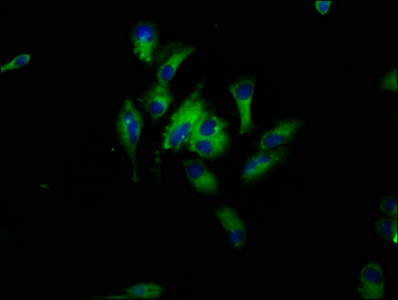Full Product Name
Rabbit anti-Homo sapiens (Human) HBEGF Polyclonal antibody
Alternative Names
diphtheria toxin receptor (heparin-binding EGF-like growth factor) antibody; diphtheria toxin receptor (heparin-binding epidermal growth factor-like growth factor) antibody; Diphtheria toxin receptor antibody; DT R antibody; DT-R antibody; DTR antibody; DTS antibody; DTSF antibody; HB-EGF antibody; HBEGF antibody; HBEGF_HUMAN antibody; HEGFL antibody; Heparin binding EGF like growth factor antibody; Heparin binding epidermal growth factor antibody; Heparin binding epidermal growth factor like growth factor antibody; Heparin-binding EGF-like growth factor antibody; Proheparin binding EGF like growth factor antibody
Immunogen
Recombinant Human Proheparin-binding EGF-like growth factor protein (63-148AA)
Immunogen Species
Homo sapiens (Human)
Conjugate
Non-conjugated
The HBEGF Antibody (Product code: CSB-PA857429LA01HU) is Non-conjugated. For HBEGF Antibody with conjugates, please check the following table.
Available Conjugates
| Conjugate |
Product Code |
Product Name |
Application |
| HRP |
CSB-PA857429LB01HU |
HBEGF Antibody, HRP conjugated |
ELISA |
| FITC |
CSB-PA857429LC01HU |
HBEGF Antibody, FITC conjugated |
|
| Biotin |
CSB-PA857429LD01HU |
HBEGF Antibody, Biotin conjugated |
ELISA |
Purification Method
>95%, Protein G purified
Concentration
It differs from different batches. Please contact us to confirm it.
Buffer
Preservative: 0.03% Proclin 300
Constituents: 50% Glycerol, 0.01M PBS, pH 7.4
Tested Applications
ELISA, IHC, IF
Recommended Dilution
| Application |
Recommended Dilution |
| IHC |
1:20-1:200 |
| IF |
1:20-1:200 |
Storage
Upon receipt, store at -20°C or -80°C. Avoid repeated freeze.
Lead Time
Basically, we can dispatch the products out in 1-3 working days after receiving your orders. Delivery time maybe differs from different purchasing way or location, please kindly consult your local distributors for specific delivery time.
Description
The HBEGF Antibody is produced by immunizing rabbits with the peptide mapping within amino acids 63-148 of the human HBEGF protein. This polyclonal HBEGF antibody exists as an unconjugated IgG. It is purified by protein G and reaches up to 95% in purity. It only reacts with human HBEGF protein. Quality tests of this antibody in ELISA, IHC, and IF have been verified. Interactions between HBEGF and EGF receptors are involved in multiple biological processes, including wounding healing, blast implantation, and tumorigenesis.
Usage
For Research Use Only. Not for use in diagnostic or therapeutic procedures.







